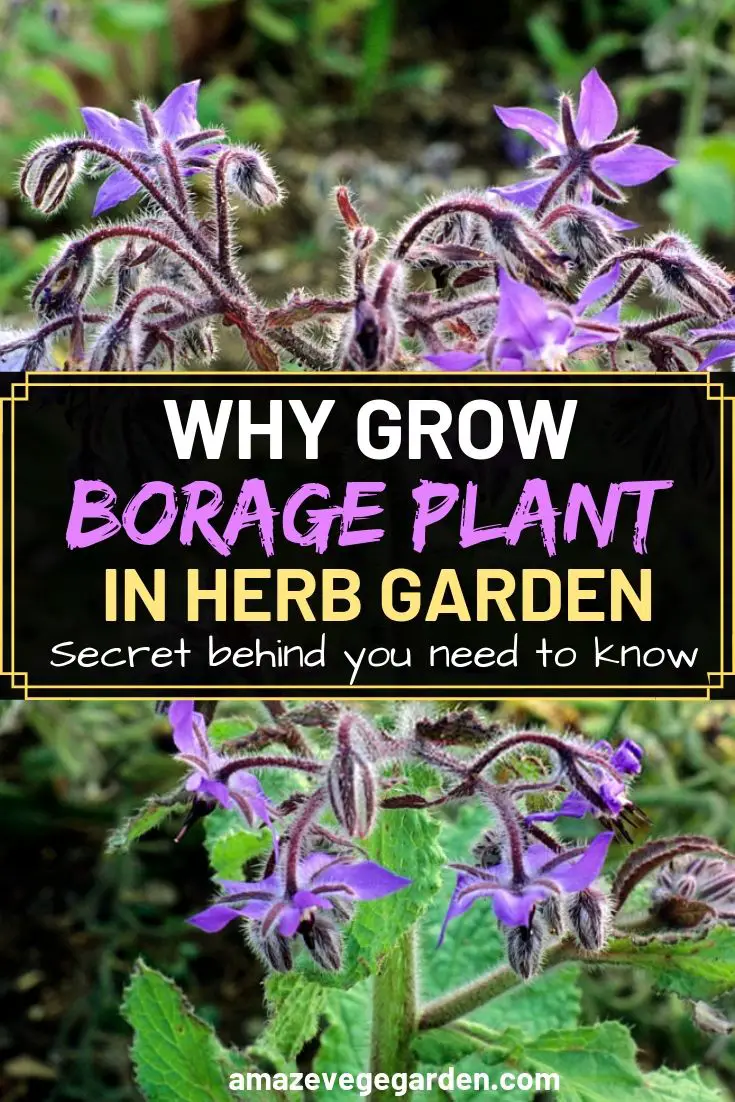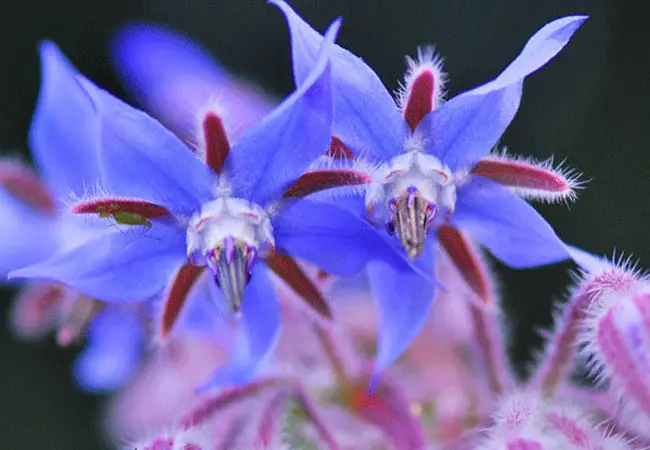The borage plant isn’t as well-known as many other herbs, but it deserves to be considered a candidate for your herb garden. First of all – it looks good. Second, it has a wide range of different uses – culinary, cosmetic, and medicinal.
Borage is easy to grow, and when in full bloom, produces masses of magnificent blue edible flowers.
The borage plant has a very distinctive taste, rather like cucumber. Because of this taste, borage was selected as a key ingredient in the original recipe for the famous Pimm’s drink.
The Health Benefits of the Borage Plant
The borage plant was well-known to the ancient Greeks and the Romans. They often wrote about its properties and uses. They believed that it was a good herb to eat because it helped dispel melancholy and boost courage.
This belief is very credible because of what science has taught us about borage in recent years. We now know that it has a high calcium and potassium content and mineral salts, and research into its properties has shown that it acts on the adrenal gland (the source of the body’s adrenaline). When we need courage, adrenalin is the chemical compound the body produces to help us.
So next time someone offers you a Pimm’s to pep you up, although they may not know it, there’s scientific proof for this.
Borage Uses & Recipes
Once you start growing the borage plant, you’ll find that it’s exceedingly good at seeding itself without any help from the herb gardener after the first year. This is why it grows so profusely in the wild in many parts of the world.
The borage plant is very robust and will grow to 2 to 3 feet in height. It produces its flowers in profusion from spring through to the end of summer. These flowers have a mild, pleasantly sweet taste and can be used in salads, soups, and desserts. A salad bowl sprinkled with blue borage plant flowers can make a beautiful centerpiece at a party.
The leaves of the borage plant are covered in fine, coarse hairs. This might be slightly off-putting when dealing with them in the kitchen, but when they are chopped up, you can use them with yogurt or cream cheese to make a dip or add to soups and other foods. Like many other famous herbs, borage is used widely in Italian recipes. They use it in omelets, soups, tarts, and savory pasta sauces.
For more detailed information on the borage plant, go here.
Growing Borage from Seed
If you decide to grow the borage plant from seed, you ideally need an open, sunny position in your herb garden. However, I’ve had a lot of success growing borage in parts of my garden that only get sun for a few hours a day.
Borage is a good herb to grow from seed. The borage seeds can be sown in a suitable container or directly in the soil of your herb garden, but don’t make the mistake of sowing a large quantity of borage seed unless you intend to fill your herb garden with borage plants.
Sow your borage seed in pots in early spring. A seven-inch terracotta flowerpot is an ideal container to use. It’s just the right size to propagate a dozen or so small borage plants, which can then be transplanted into larger pots or directly into your herb garden.
Start by filling your flowerpot within an inch of the top with a mixture of compost and vermiculite (refer to our article on “growing herbs from seed”). Scatter the borage seeds thinly on the top of the pot and then cover them with a quarter of an inch of your compost mixture.
Keep the soil in the pot moist (I use a spray to do this). Providing the surrounding temperature is high enough (which should be in early spring for most regions), you’ll have small borage plants poking through the potting mixture in 7 – 10 days. When the plants have spread their first leaves by about 1”, you can transplant them to a suitable position at the back of your herb garden.
As well as planting borage in my herb garden, I also transplant some of my borage plants into a large patio pot. They look fantastic on the patio when they’re in full bloom.
Read also: How To Grow Indoor Herb Garden Year-Round
Harvesting Your Borage
Harvest the flowers from your borage plant when they start to appear but only do this when you need them for your salads and desserts. You can also try crystallizing the borage flowers using egg white a sugar. When they’re prepared in this way, the glistening flowers make wonderful decorations for cakes and desserts.
The leaves of the borage plant become even more prickly as the plant ages, so it’s best to pick them when they’re young. Chop them up finely and add them to stews or soups. The older prickly leaves can also be blanched and used as a vegetable side dish or prepare a restorative borage herbal infusion.
Uses for Your Borage Plant
We have already described some of the uses of borage in salads, sauces, soups, etc., and, when in a crystallized form, on cakes and desserts, but borage leaves can also be used to prepare restorative drinks and in poultices and creams to soften the skin.
Try this recipe for preparing a borage dip:
- Start with two generous handfuls of borage flower stems, 250gm of fresh goat’s cheese.
- Remove the flowers and leaves from each stem of the borage.
- Crush the goat’s cheese in a bowl with a fork and salt and pepper.
- Next, mix in the chopped borage flowers and leaves.
- Keep the mixture refrigerated until required.
- Use the borage dip by spreading it generously over slices of bread.
Did you find this post useful? Would you like to get back to it later? Save THIS PIN below to your gardening, herb garden, or house plant board on Pinterest! Thanks 🙂



Tried borage flowers for the first time on a linden syrup cake today. They tasted fishy so I’ll try again on a savory.